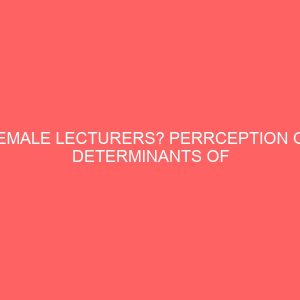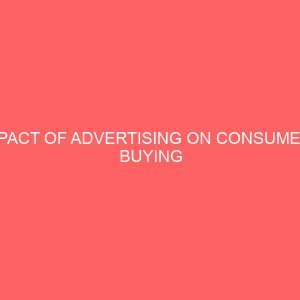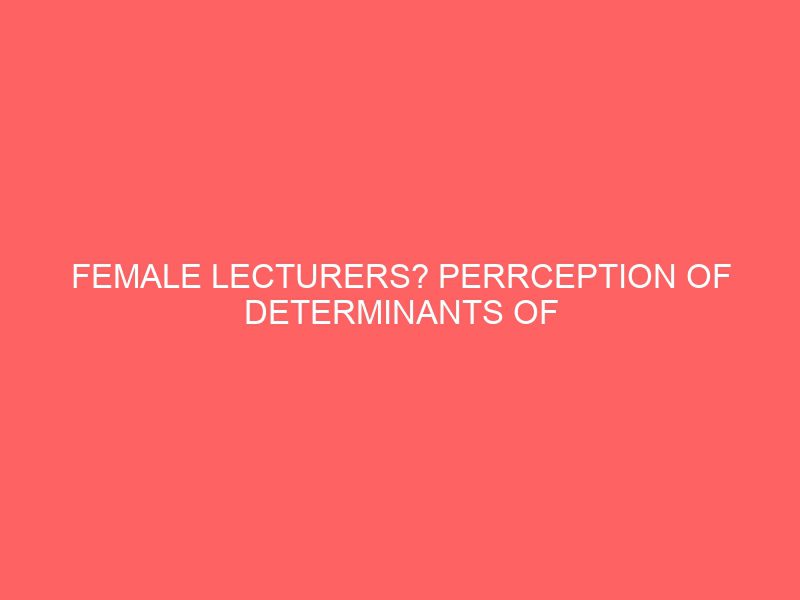Description
CHAPTER ONE INTRODUCTION Background of the Study Impulse buying is a habit which every consumer often displays in his or her daily buying experiences. Although, Consumers hesitate to associate with impulse buying attitude, they hardly adhere strictly to the original buying plan which had earlier been articulated before visiting the retail stores, and this reflects impulse buying habit. Engel and Blackwell (2002) described impulse buying as a buying action undertaken without a careful buying plan previously having been articulated or formed prior to entering the retail store. Also, Bateman and Holmes (2005) defined impulse buying as a sudden strong wish or need to buy something without thinking about it carefully. In the same vein, Phillips and Bradshaw (2002) affirmed that impulse buying is a sudden strong wish or need to buy something without planning or thinking about it carefully or comparing such goods with similar or related goods with a view to making a better purchasing choice. Impulse buying also paints a scenario which de-emphasizes the fixed plan of items to be purchased prior to visiting the retail store on the argument that store environment could provide a better purchase stimulation. Cobb and Hoyer (2006) affirmed this assertion by positing that shopping is much easier with products highly visible and store environment acting as prompt lists, allowing consumers to defer decision making until they are in-store. Also, Dittmer (2008) noted that consumers? intent to purchase is far from fixed and can continue to be modified right up to the point of purchase. Douglas and Isherwood (2008) supported the above idea by stating that consumers need not have a fixed or permanent plan of buying action prior to visiting the retail store because store environment always provides a better buying stimulation on account of the presence of large varieties of highly visible products displayed and competing for attention of consumers who visit the retail store. Therefore impulse buying in the context of this research is a sudden strong wish or need to buy something without careful planning or without adhering strictly to the original buying plan which had earlier been articulated before visiting the retail stores. Buying habit involves the planning and articulation of the goods to be purchased before visiting the retail store, however, the prevalent practices of impulse buying is a buying habit which consumers often display due to the influence of in-store-stimuli. Philip and Duncan (2008) distinguished four types of impulse buying habit as follows: pure impulse buying, reminder impulse buying, suggestion impulse buying and expected impulse buying. Pure impulse buying is the type of impulse buying which lacks any element of cautious and considered approach to a purchase. Pure impulse buying exposes the consumer or shopper to a feeling of overwhelming force from the products to be purchased and also a feeling of having to buy the product-immediately thereby ignoring any negative consequences from the purchase. Reminder impulse buying occurs when a consumer or shopper sees an item and remembers that the stock at home is exhausted or low or recalls an advertisement or other information about the item which triggers up the sudden decision to buy the item. Suggestion impulse buying occurs when the consumer or shopper sees a product for the first time and visualizes the need for it, even though she has no previous knowledge of the item. Under suggestion impulse buying consideration, product quality, function and the like are evaluated at the point of purchase. Expected impulse buying occurs when the consumer or shopper enters the retail store with some specific purchases in mind, but with the expectation and intension to make other purchases that depend on price specials or coupons offers. Female lecturers could exhibit any of the above form of impulse buying habit based on the extent to which certain features of such goods influence their impulse buying. In more specific terms therefore, the researcher intends to examine six features or characteristics of goods which pre-dispose such goods or make them prone to impulse buying and investigate the extent to which female lecturers perceive these features or characteristics to determine their impulse buying. Stern, in Geof and Clive (2004) articulated these features or characteristics and referred to them as determinants of impulse buying. A determinant therefore is an element that identifies the nature of something or fixes or conditions an outcome. Determinants of impulse buying are those features or characteristics or qualities of goods which induce or stimulate consumers? impulse buying of such goods. These determinants are low price goods, small size goods, colour of goods, low weight goods, portable goods and brand of goods. Low price goods are goods whose prices are deliberately reduced by retailers without tampering with the quality. Another dimension of low price goods are those frequently used household consumer goods that are bought immediately and mostly in small amount without meticulous planning and search efforts and they are often categorized under household convenience goods such as salt, pepper, toiletries, provisions, to mention a few (Kotler, 2003). Narasimhan, Neslin and Sen (2006) noted other aspects of low price goods to include those goods whose qualities have deliberately been reduced by retailers and other middlemen in the channel of distribution as an instrument of reduction in their prices, for instance, hard discs for music and other low quality electronics, handsets, shoes, dresses and many other low quality consumer goods. Whichever form of price reduction associated with low price goods, the ultimate aim is to stimulate or induce impulse buying of such goods, using low price as a strategy. Consequently, most of these household consumer goods have relatively low prices which attract impulse buying. Secondly, retailers employ various low pricing policies to attract impulse attention and buying among consumers. Retailers also employ advertising messages, tradeshows, among others, to inform and sensitize consumers about the low price goods and these enlightenment campaign elicit tremendous amount of impulse attention and buying among consumers (Stanton, 2001). However, most consumers or shoppers engage on impulse buying of goods that are not necessary for the family or individual use. When such goods are bought on impulse due to low price the goods are not used at the appropriate time because the goods are bought without intention to make any specific and immediate use. Sometimes such goods got wasted. Also retailers could reduce the prices of low quality and expired goods to attract impulse buying and these retailers? action are always at the expense of consumers who buy on impulse without carefully examining the goods being bought. Rampant cases of house wives or house helps buying all sorts of low price, but needless jewelries, fashion outfits and the like at the expense of highly needed family food stuff and other family consumer goods abound. Another characteristics of goods that can cause impulse buying is small size goods. Small size goods are described as goods that are not large in size, number, amount or degree. Small size goods stimulate impulse buying consideration because these goods are easily picked and purchased without any form of meticulous planning coupled with the fact that most of them have low prices. Consequently, supermarkets and department stores display large quantities and varieties of small size goods such as provisions, cosmetics and soft drinks in front and shelves or counters of their retail stores instead of allowing them in cartons for whole sale. Displaying of small size goods can induce impulse buying because small size goods form the bulk of goods that are routinely purchased and used by consumers sometimes, on the spur of the moment and therefore consumers often look forward to seeing such goods displayed in retail stores (Henry, 2004). In many cases however, small size goods are grossly inadequate for use by larger families and also uneconomical when considered in terms of large scale economic benefit which stipulates that large scale purchases lead to low price per unit cost and piece meal or small scale purchases increase the cost per unit of goods purchased. Hence, such small size purchases lead consumers to waste of financial resources. Furthermore, the colour of goods can influence consumers to make impulse buying. Colour of goods describes the appearance that goods have which results from the way in which the goods reflect light. Duane and Sarah (2004) distinguished the colours of good as follows: yellow, green, blue, violet, red, orange, yellow-green, blue-violet, red-violet, red-orange and yellow-orange. Other colours include golden colour, metallic colour, gray colour, light blue, silver colour, white colour and so on. Colour of goods identified specific goods whose colour represents any of the above mentioned colours, among others (Duane and Sarah, 2004). Colour of goods induces or stimulates impulse buying among consumers because different colours represent different attractions, feelings, emotions, affections and purchase considerations among different consumers of different goods (Kotler and Armstrong, 2004). Female lecturers may select colours that match their dresses, handbags, shoes or slippers as well as headties and necklaces. According to Duana and Sarah (2004), female lecturers prefer colours of dresses, in purple and accessories in gold or silver colours. Accessories are fashion elements which support and bring out the beauty of main dress or outfit, such as shoes, ear or handrings, necklaces and headties. Thus, Supermarkets, department stores and related retail outlets display varieties of goods with different colours to entice consumers, including female lecturers. Incidentally, it is a common saying that all that glitters is not gold. Some retailers and manufacturers of goods could be fraudulent in the name of profit maximization. Experience has shown that inferior, expired and old consumer goods are carefully refurbished and repainted in enticing colours to attract impulse purchases from unsuspecting and, of course, sometimes careless and passive consumers or shoppers at very exorbitant prices using the colours to deceive consumers to believe such goods are new. Some exa







